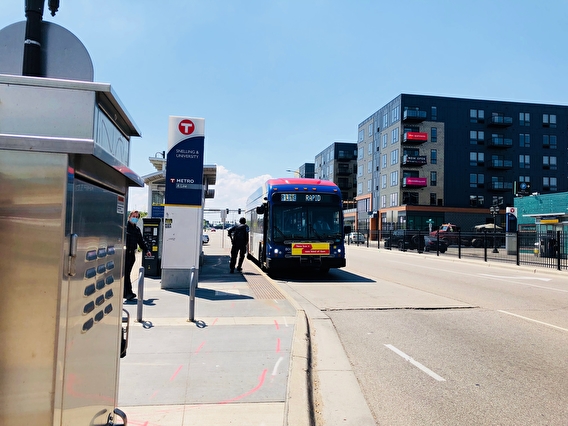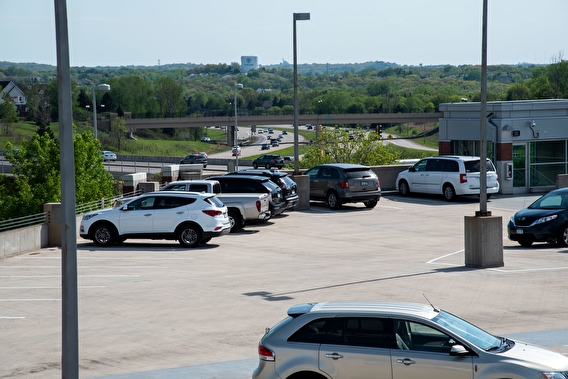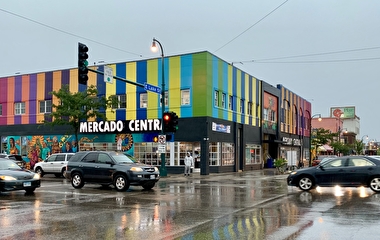
How does a transitway affect automobile traffic on nearby roadways? What factors influence which park-and-ride facilities people choose? These two questions were the focus of a recent two-part project by U of M researchers.
Transitways—such as dedicated light-rail transit (LRT) and bus rapid transit corridors—have the potential to mitigate growing traffic volumes and relieve congestion on nearby roads by prompting some drivers to make the switch to transit. There was little research of this effect, however, for the Green Line LRT between Minneapolis and St. Paul.
Using extensive traffic data before and after the opening of the Green Line, researchers led by Jason Cao examined the impact of the line on road traffic within and outside of LRT influence areas. They controlled for a wide range of variables such as transit service, land use, and road classes.
The team found that in its first two years of operation, the Green Line reduced traffic on nearby roads by 22 percent compared with roads outside its influence area (defined as within a mile from the line). In the next two years, vehicle traffic on nearby roads bounced back by about 6 percentage points.
“This rebound was likely due to land-use development spurred by the Green Line and by travelers who switched from other routes and modes,” says Cao, a professor in the Humphrey School of Public Affairs. “Overall, the Green Line had a significant influence on nearby road traffic, and this influence keeps evolving over time.”
The Minnesota Department of Transportation (MnDOT), a project sponsor, will use the data and findings in its transit evaluations and planning. “This project highlights how a transit investment may benefit not only transit, but also other transportation modes,” says Jim Henricksen, director of travel behavior analysis with MnDOT’s Metro District.

For the park-and-ride (PNR) portion of the project, researchers led by Alireza Khani examined responses to Metro Transit’s 2016 on-board surveys, which provided trip attributes and demographic information about riders. Findings from the PNR trips in the survey include:
- PNR users chose a route with a high proportion of time on transit—not necessarily the fastest overall travel time. On average, they chose a route that took 17 percent longer than the shortest route available to them.
- Users preferred to minimize driving time and transfers. They viewed travel time in a car as four times more burdensome than the same amount of time traveled by transit. Adding a transfer was seen as equivalent to an additional 17.5 minutes of transit time.
- Users’ behavior indicated that transitway routes had higher utility than comparable express bus routes. A transitway route was viewed as favorably as an express bus route that was 16.6 minutes faster.
- Users favored PNR facilities that were served by transitways and that had more amenities.
“Overall, PNR users spent more of their travel time on transit and less time in a car, and made fewer transfers,” says Khani, an associate professor in the Department of Civil, Environmental, and Geo- Engineering. “And they saw higher value in transitways than in express bus routes.”
The researchers used 1,895 PNR trip records to develop and test a park-and-ride location choice model. Their new model correctly predicted the PNR choice of more than 64 percent of users when tested on a sample group, Khani says.
The PNR model will help planners design, size, and locate facilities that are both appealing and convenient for transit users and determine which facilities to prioritize for major maintenance and renovations. The model “provides insight into what is important to park-and-ride users and enhances our ability to forecast future demand,” Henricksen says.
The project was part of the Transitway Impacts Research Program.


